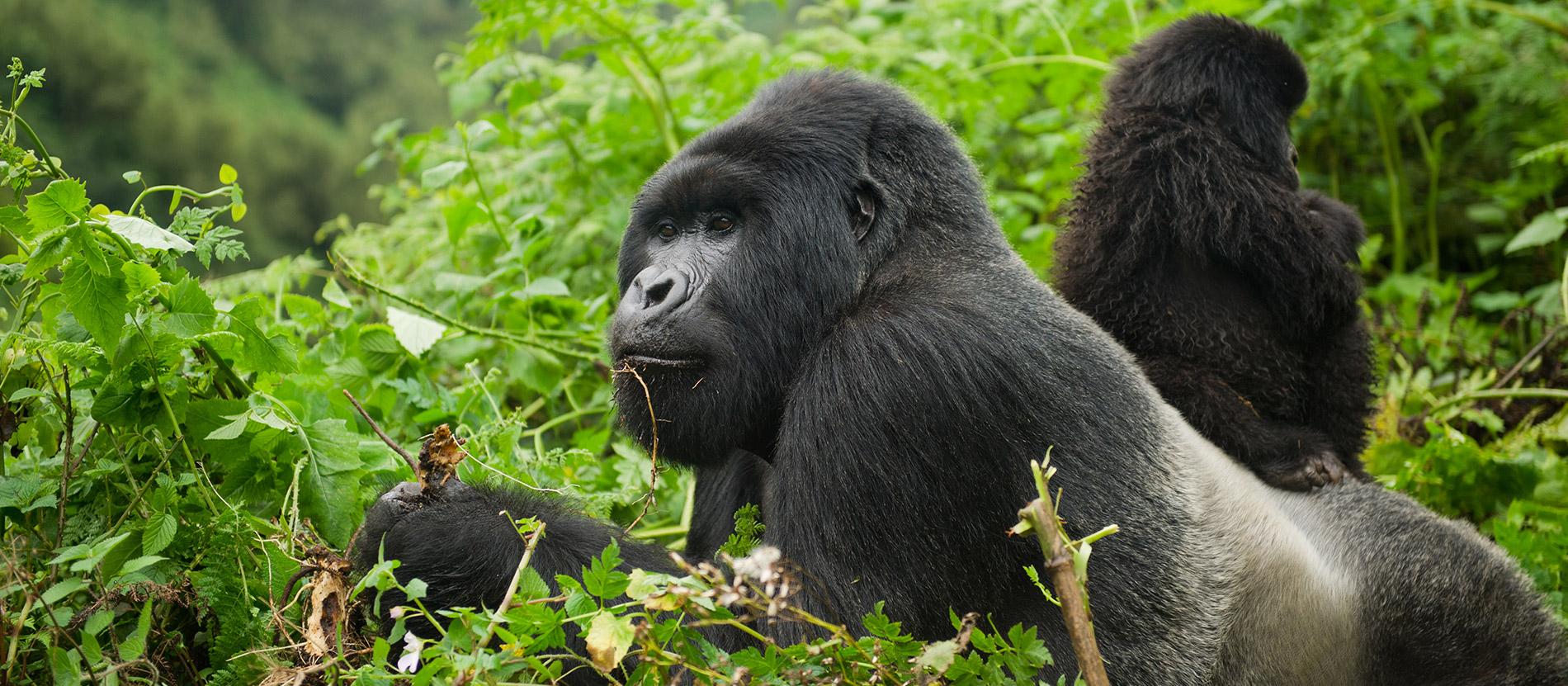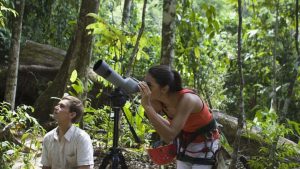Rwanda Gorilla trekking in Volcanoes National Park seemingly is a life winning Rwanda Safari Insight, stepping in the cold jungle full of dead sounds tempting to shy off, gives life to Rwanda Mountain Gorillas, hundreds of Rwanda Mammals, Unique Bird species and other dwellers give rise to a wonderful gorilla trekking Safari experience in Rwanda.
Zoologists were introduced to the Mountain Gorilla in 1903 when Captain Friedrich Robert von Beringe shot two gorillas on the slopes of Mt. Sabinyo currently Rwanda. Presently, the gorilla population is split between Virunga mountain ranges covering the border region between Rwanda, Uganda, and DRC. Gorilla trekking is done in Volcanoes National Park locates116km/72miles and 2 hours’ drive away from the capital city Kigali in Musanze District north of Rwanda. A third of the world’s gorilla population is found in Volcanoes NP.
The mountain gorilla is a very large, barrel-chested ape, very black, densely-furred to protect against the cold with a broad face. Mountain gorillas are very sociable and exist in groups of between 5 to 50 individuals. The group will be led by one dominant ‘silverback’ (silver hairs start to grow in the saddle of the back). An adult male is usually 13 years old. In the gorilla community the silverback eats first, but is also accountable for the defense of the group, a feature that allows gorillas to spend more time on the ground than other great apes. When the silverback dies, his group usually splits. When two groups move close to one another, they will avoid contact in order to minimize the risk of conflict. The mountain gorilla has a limited diet than lowland gorillas. They feed mostly on bamboo, leaves, shoots and stems of over 140 other species, wild celery and vines. Gorillas spend much of the day resting, which provides such a great opportunity for trekkers to join and observe the group.
Reproduction occurs progressively, with adult females over the age of eight giving birth on average one every four years and often not more than six in a lifetime. The young gorillas have a lengthy childhood where they are ferociously protected by both the females and the dominant silverback. The incoming dominant male will habitually kill the young gorillas in a case where the silverback dies or is pushed from the group. The females always protect a dominant silverback when it is threatened. The protection and slow population growth of the gorillas can be attributed to tourists who come to visit them. Without this critical finance, the incentives to protect the gorillas’ environment would be reduced, and we might not have gorillas left in their natural habitats today.
Gorilla trekking entails going on a guided hike through impenetrable rainforest to spend time with a specific habituated gorilla group in their innate environment. There are 12 habituated mountain gorilla families in the Volcanoes National Park ready for trekking. Habituation of gorillas is the process by which trained people like rangers make continuous visits to a group of wild gorillas in the jungle whose instinct is to flee or attack a human because they perceive him or her an intruder in their natural space and thus a threat, to a point the gorillas will believe that the humans are actually not a threat after realizing they are not being harmed by these persistent human visitors. At this point the gorillas can tolerate the humans in their vicinity but for a short while.
When American naturalist Dian Fossey moved to Rwanda half a century ago to study mountain gorillas, their numbers were dwindling, down to just 254 individuals, but today they’re up to over 600, with another 400 in Uganda. Tourists play a vital role in the joint effort with scientists and governments to save the gorillas and communities around them. The Rwandan government regulates the visits to no more than eight people per group, for one hour with the gorillas, with precautions taken to protect them from human illness.




